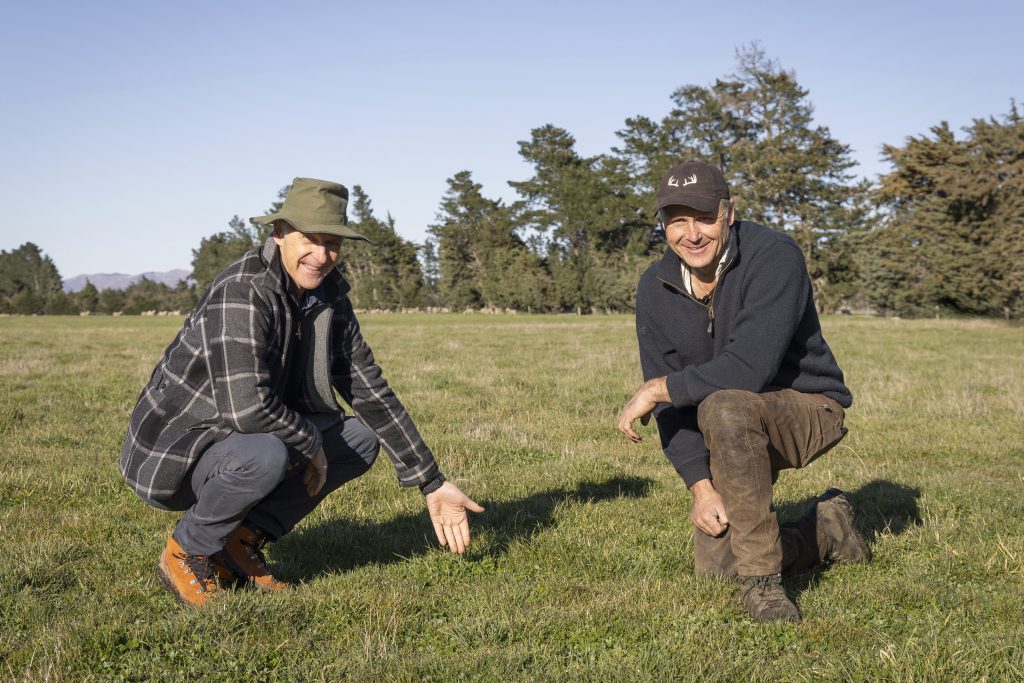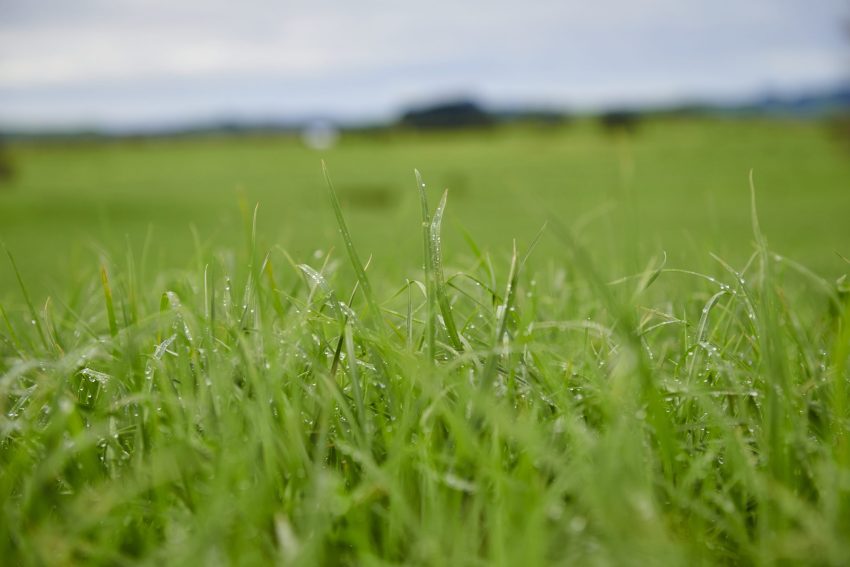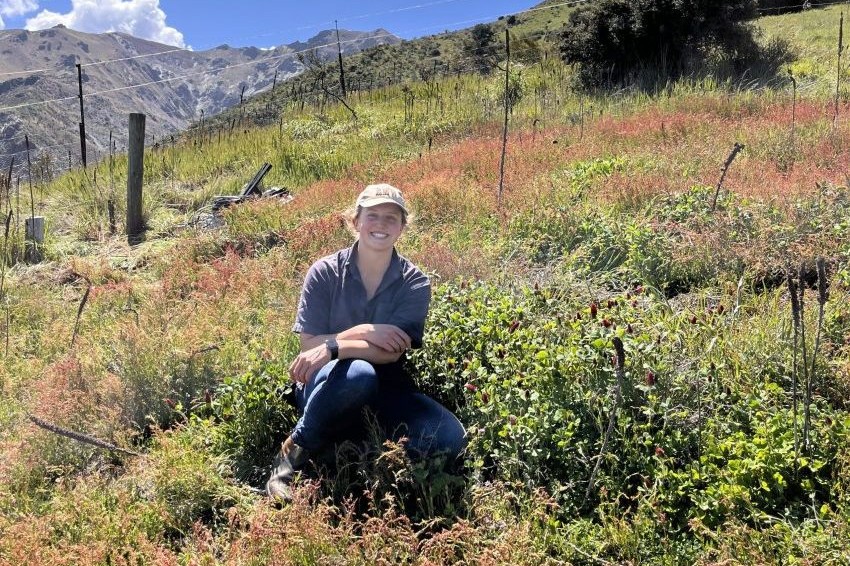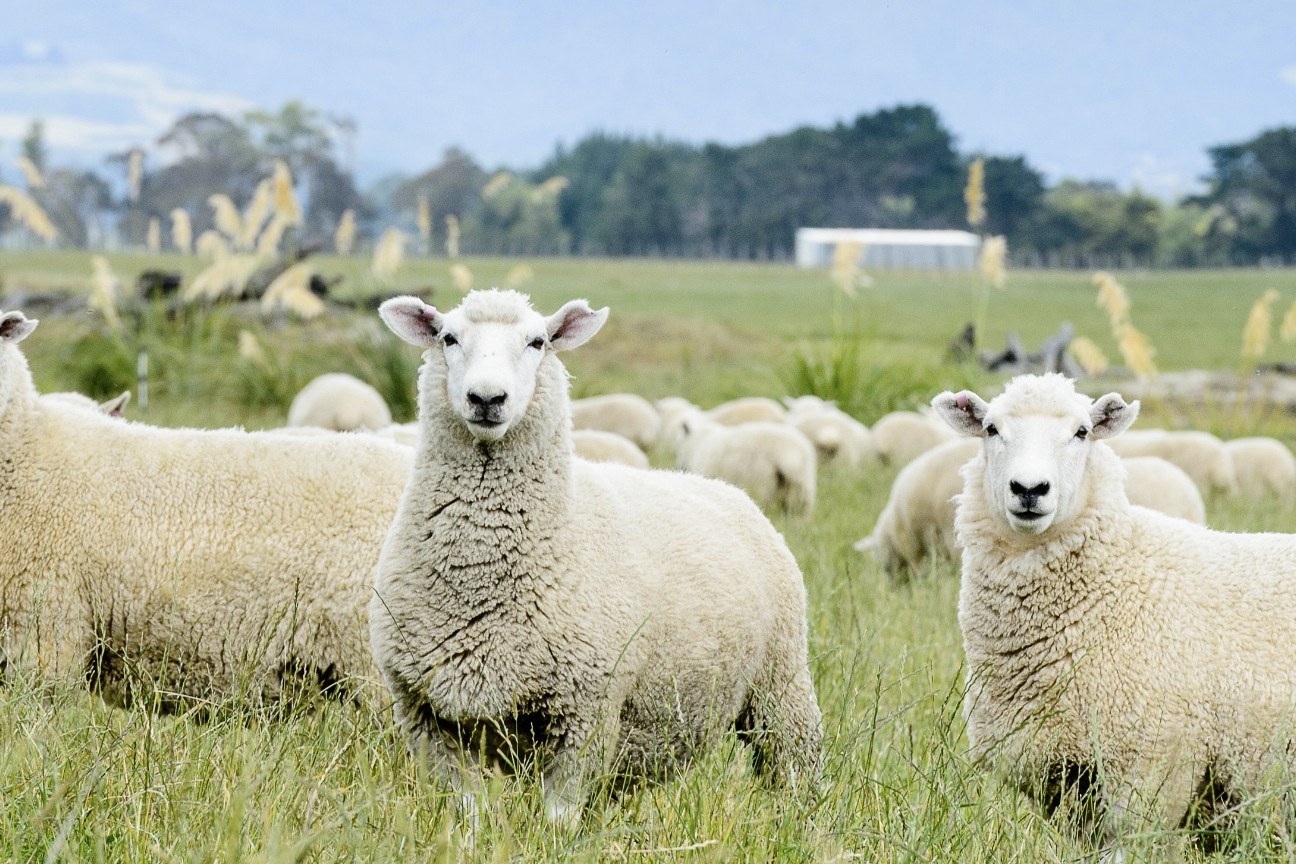Legumes drive high performance
Legumes are the engine room that drive the Zino family’s sheep, beef and deer operation with their whole farm system geared around these high-protein forages. Words Sandra Taylor, Photos Lucy Hunter-Weston.
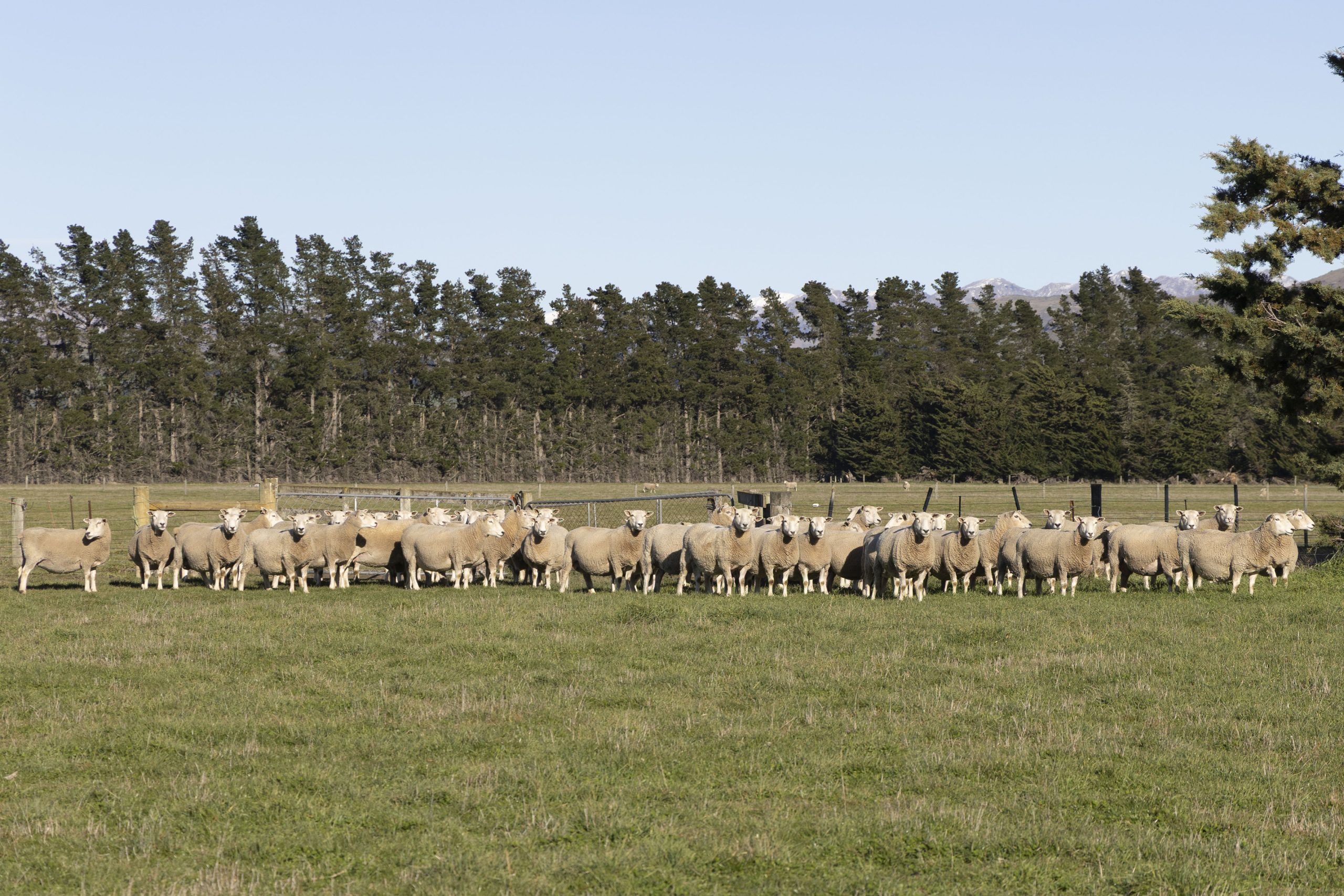
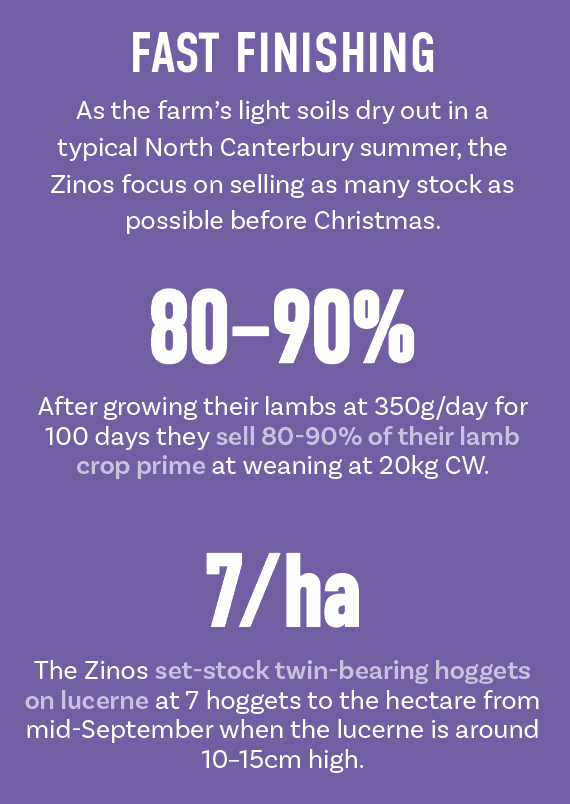 The Zinos are striving to run a low-cost, high-profit business by understanding the strengths and weaknesses of their land and growing the right legume in the right place.
The Zinos are striving to run a low-cost, high-profit business by understanding the strengths and weaknesses of their land and growing the right legume in the right place.
At a Beef + Lamb New Zealand North Canterbury Farming for Profit field day held on their farm near Hawarden, Mark Zino explained how they aim to have large volumes of legumes growing between August and April and this includes lucerne, subterranean clover and red and white clovers. These are grown along with chicory and some ryegrass.
Their farm is divided into management units, with lucerne and brassicas grown under irrigation on their river flats while subterranean clover flourishes on medium to stony silt loam soils on the middle part of their farm.
Mark says these free-draining soils are ideal for sub clover which thrives under the correct management.
On their heavier ground, the Zinos are establishing red and white clover mixes which are used for growing lambs.
“We don’t use this land for winter, it’s too wet, but it is valuable for finishing lambs,” says Mark.
Conversely, the farm’s predominately lighter soils are quick to dry out in a typical North Canterbury summer and Mark says they are running a moderate stocking rate of 6–9 stock units/hectare, mindful of the fact that they need to get rid of as many stock as possible before Christmas.
Fast-growing lambs
In the sheep side of their business, the Zinos aim to grow their lambs at over 300g/day for 100 days and sell 80% of their lamb crop prime at weaning.
They can only do this by feeding legumes, particularly sub clover, which drives lactation and these high pre-weaning growth rates.
“There is no better feed to get a ewe milking well than sub clover. We get high lamb survival and high lamb growth rates as she maintains peak lactation for longer,” says Mark.
To help maximise sub clover production, ewes are used to clean up pastures over summer and autumn. This ensures the clover gets enough light in spring.
Mark says they can grow a lot of feed in May, so they make sure the ewes are off the lambing platform by this time to allow pasture covers to build.
Ewes
The Zinos’ Longdown ewes perform particularly well in their environment, but the family also feed them well throughout the year, aiming to hold their ewes at a body condition score of 3–3.5 all year round.
A month before mating, they body condition score (BCS) all of their ewes and take blood tests from a sample mob to test the flock’s trace element status.
They take out all the ewes at a BCS of 2–3 and priority feed them in the lead-up to mating. Typically, they don’t flush their ewes as they are inherently highly fertile ewes in optimal body condition.
Ewes are shorn in May and wintered on kale on two-to-three-day breaks. Mark says they have found their ewes to be more content on multiple-day breaks rather than on daily breaks.
They strive to keep as much condition on their ewes as possible in the lead-up to lambing.
The ewes are set-stocked on the 450ha lambing platform at 6–11/ha depending on the number of lambs they are carrying.
They stay in their lambing paddocks for about a month, before the Zinos start boxing up mobs of ewes and lambs and rotating them around four paddocks on two-day shifts.
Lucerne
Lucerne is a valuable crop in the Zinos’ farm system. While they have found it has limitations in September and October, the forage really comes into its own from November.
“Milking ewes don’t do well on it, it’s better when the heat comes on it from November,” says Mark.
They have, however, been set-stocking twin-bearing hoggets on lucerne at 7/ha from mid-September when the lucerne is around 10–15cm high.
“There is no better feed to get a ewe milking well than sub clover.” – Mark Zino, North Canterbury
As well as providing high-quality feed, the lucerne provides natural cover for the lambs and Mark says they have been very pleased with the resulting lambs.
“Last spring the twin hogget lambs did incredibly well, averaging 34kg at weaning, and we were rapt with that weaning weight.”
Lucerne is used for lambs post-weaning and is also used as a tool to synchronise ovulation in two-tooth ewes.
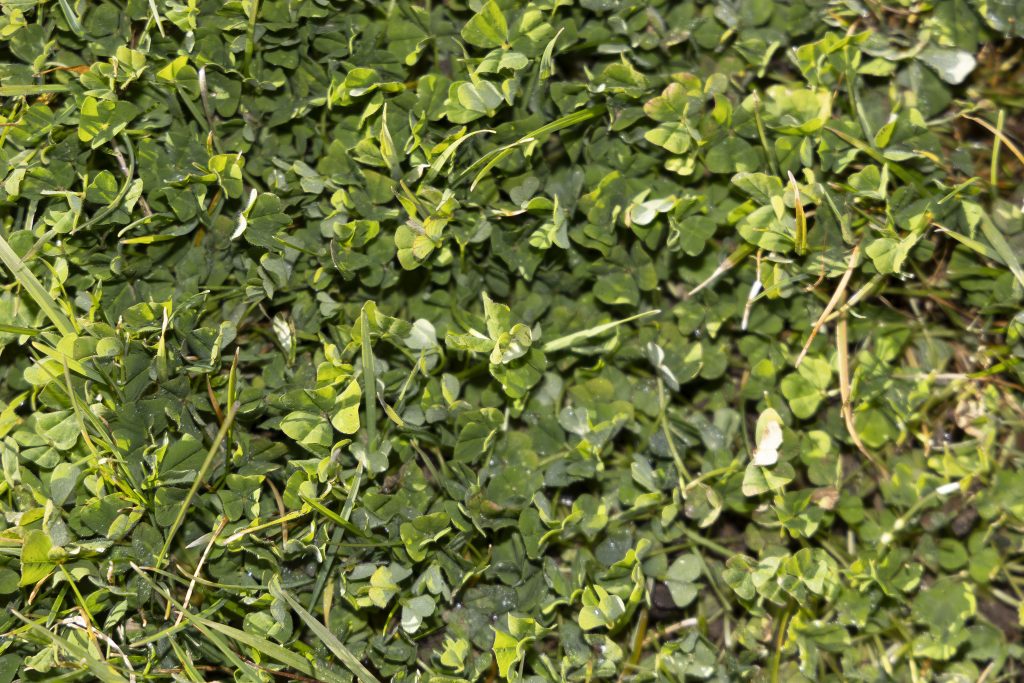 Using the science
Using the science
Agronomist Andrew Johnston has been working with the Zino family for 40 years and has drawn on the research carried out on Lincoln University’s Dryland Research Unit, led by Professor Derrick Moot, to help the family transition to a farm system driven by legumes.
“The braver we got about reducing our reliance on ryegrass, the more success we had.”
He says when setting the system, they looked at the type of country, the period when the Zinos required the most feed and found the most suitable legume to fit both the type of country and feed demand.
Andrew says lucerne’s deep tap roots will explore the soil profile to find water and this gives the plant its trademark ability to persist and produce large quantities of high-quality feed for many years.
“This is simply because of its ability to search for and utilise water in dry environments such as North Canterbury.”
Andrew says the ideal legume to complement lucerne is sub clover, and while the family did have resident sub clover in their lighter country, this has been augmented over the years by other complementary sub clovers.
Sub is a cool season legume, and its primary requirement is sunlight, says Andrew, so it is important to reduce the competition from grass so the clover can fully express itself and be ready for lambing ewes in August.
Like lucerne, sub clover has the ability to persist in dryland environments.
Red clover has been sown on the farm’s heavier soils and used for finishing lambs, but Andrew says they are not expecting the crop to last long.
“It’s specifically for lamb finishing and I don’t expect to get more than three years out of it. If water isn’t a limiting factor, red clover will perform well, but it still won’t produce as much drymatter as lucerne.”
Andrew says the work of Lincoln University’s Dryland Unit has informed the decisions made on the Zinos’ farm operation.
“The science has shown us that it is possible to grow lambs at over 300g/day on legumes.” – Andrew Johnston, Agronomist
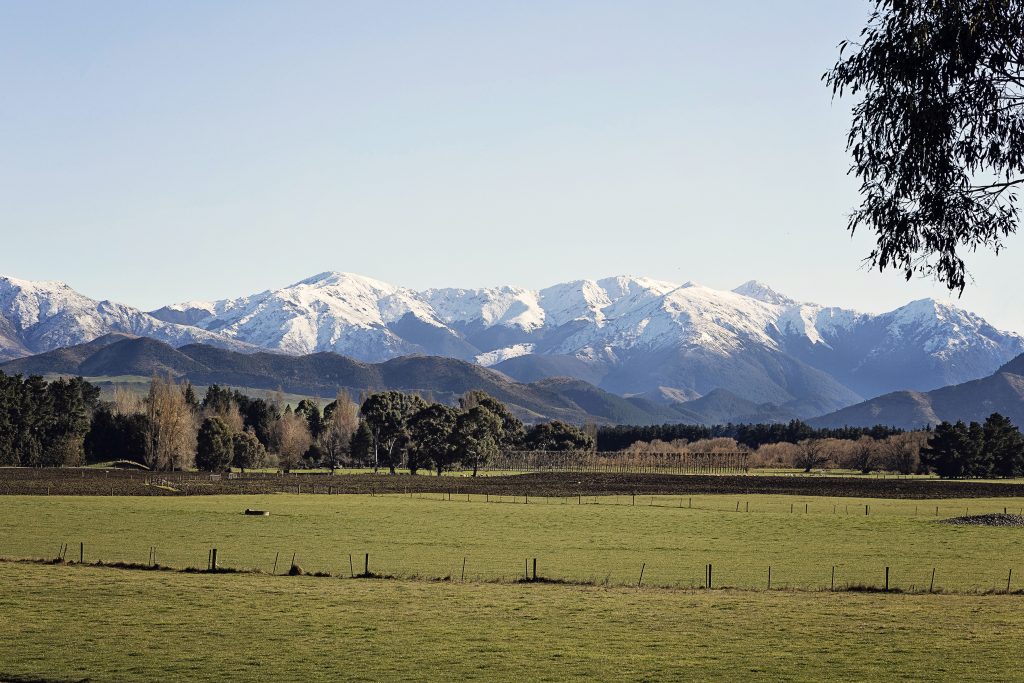
“We’ve relied heavily on science, and it is science that has informed their decision-making. The science has shown us that it is possible to grow lambs at over 300g/day on legumes.”
He says the Zinos’ farm system revolves around the water-use efficiency of the legumes they are growing and this has helped build resilience in their summer dry environment.
Andrew says as well as feeding brassicas, the Zinos do use short rotation ryegrasses for wintering sheep.
He says it is possible to add an annual legume, such as Persian clover or sub clover, to the short rotation ryegrass and this increases the ME of every mouthful of forage eaten. A high ME feed is particularly important for multiple-bearing in-lamb ewes as their intake is limited because of their reduced stomach size.

